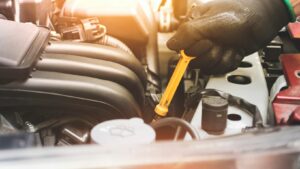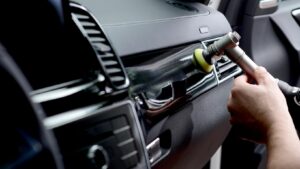Taking Care of Your Vehicle
- Routine Maintenance is Key: Regular tasks such as oil changes, tire rotations, and brake inspections are essential for optimal vehicle performance and longevity.
- Neglect Leads to Costs: Skipping regular maintenance can result in unexpected breakdowns, safety risks, and costly repairs down the line.
- Simple Checks Matter: Regularly checking fluid levels, tire pressure, and dashboard indicators can significantly improve vehicle reliability and prevent serious issues.
- Seasonal Preparation is Crucial: Preparing your vehicle for winter and summer conditions helps maintain performance, enhances safety, and extends the life of your vehicle.
- Cleaning Enhances Longevity: Consistently cleaning both the interior and exterior of your vehicle protects against damage and helps preserve its resale value.
- Monitor Performance: Staying attuned to unusual sounds and dashboard indicators allows for early detection of potential issues, promoting proactive vehicle care.
Owning a vehicle is a significant investment, and taking care of it goes beyond just filling up the gas tank. Regular maintenance not only enhances performance but also extends the life of the vehicle. From oil changes to tire rotations, each task plays a crucial role in keeping the engine running smoothly and preventing costly repairs down the road.
Neglecting vehicle care can lead to unexpected breakdowns and a decrease in safety. Simple habits like checking fluid levels and keeping the tires properly inflated can make a world of difference. By prioritizing vehicle maintenance, drivers can enjoy peace of mind knowing their car is reliable and safe for every journey.
Importance Of Taking Care Of Your Vehicle

Taking care of a vehicle is essential for optimal performance and safety. Regular maintenance, including oil changes, brake inspections, and tire rotations, enhances engine efficiency and prolongs the vehicle’s lifespan. Routine check-ups often spot potential issues before they escalate, preventing costly repairs.
Neglecting vehicle maintenance leads to unexpected breakdowns and safety risks. A well-maintained car reduces the likelihood of accidents related to tire failure or brake malfunction. Drivers can enjoy peace of mind knowing their vehicles are in good condition when they prioritize regular care.
Simple habits, such as routinely checking fluid levels, including engine oil and coolant, and maintaining proper tire pressure, significantly improve reliability. Adopting these practices keeps vehicles running smoothly and can contribute to better fuel efficiency.
Investing in vehicle care minimizes depreciation, preserving the vehicle’s resale value. A car with a documented service history attracts buyers and often commands a higher price. Overall, the commitment to regular vehicle maintenance is a smart decision that pays dividends over time.
Regular Maintenance
Regular maintenance is essential for vehicle reliability and longevity. Performing specific tasks ensures safety and efficiency while preserving the vehicle’s value.
Oil Changes
Oil changes are critical for maintaining engine health. It is advisable to change the oil every 3,000 to 5,000 miles, or according to the manufacturer’s guidelines. Regular changes reduce friction and heat, enhancing engine efficiency. Clean oil prevents sludge buildup, which can damage engine components over time. Failure to change oil can lead to severe engine damage, resulting in costly repairs.
Tire Rotations
Tire rotations promote even wear and extend tire life. Rotating tires every 5,000 to 7,500 miles maintains balanced handling and improves traction. Uneven tire wear can negatively affect gas mileage and increase the risk of tire blowouts. Regular rotations also ensure the vehicle remains stable while driving, making it essential for safe operation.
Brake Inspections
Brake inspections are vital for ensuring vehicle safety. Routine checks every 10,000 to 15,000 miles are recommended to assess brake pads, rotors, and fluid levels. Promptly identifying wear can prevent brake failure, which poses significant safety risks. Effective braking systems contribute to shorter stopping distances and enhance overall driving safety.
Cleaning Your Vehicle
Cleaning a vehicle consistently is essential for maintaining its appearance and longevity. A clean car not only looks appealing but also helps prevent damage from dirt and grime buildup.
Interior Cleaning
Interior cleaning enhances comfort and preserves the vehicle’s value. Regular vacuuming removes dirt, crumbs, and debris from seats and carpets. Wiping surfaces with appropriate cleaners helps eliminate dust and allergens from dashboards and middle consoles. Additionally, conditioning leather seats protects them from cracking and fading. Cleaning windows and mirrors improves visibility, contributing to safer driving conditions.
Exterior Washing
Exterior washing prevents the buildup of dirt, salt, and contaminants that can damage paint and lead to rust. Washing every two weeks helps maintain the vehicle’s shine and protects against weather-related deterioration. Using pH-balanced car soap prevents stripping protective wax. Applying wax or sealants creates a protective barrier against contaminants while providing a glossy finish.
Regular cleaning practices contribute significantly to the vehicle’s aesthetic appeal, safety, and longevity.
Monitoring Vehicle Performance
Monitoring vehicle performance involves regularly checking indicators and listening for any unusual sounds. These simple actions help identify potential issues before they escalate.
Understanding Dashboard Indicators
Understanding dashboard indicators ensures timely intervention when problems arise. Common indicators include the check engine light, oil pressure warning, and battery alert. The check engine light signals a variety of issues, from minor sensor problems to significant engine faults. The oil pressure warning alerts to low oil levels or pressure, indicating the need for immediate action. The battery alert indicates potential issues with the charging system. Addressing these indicators promptly can prevent serious engine damage and costly repairs. Heeding warning lights contributes to overall vehicle reliability.
Listening For Unusual Noises
Listening for unusual noises contributes to identifying performance issues early. Specific sounds often signal problems, such as squeaking or grinding when braking, which may indicate worn brake pads. A knocking noise from the engine could suggest low oil levels or severe engine damage. Whining or clunking sounds while turning might point to issues with the power steering system or drivetrain. Identifying and addressing these noises quickly minimizes the risk of major mechanical failures and enhances safety on the road. Being vigilant about unusual sounds supports proactive vehicle maintenance strategies.
Seasonal Care Tips
Seasonal care is essential for vehicle performance and longevity. Different weather conditions require specific attention to ensure optimal functioning.
Preparing For Winter
Preparing a vehicle for winter involves several key maintenance tasks.
- Tire Check: Examine tire tread depth. Tires with at least 2/32 inches of tread provide adequate traction in snow. Consider switching to winter tires for enhanced grip.
- Battery Maintenance: Inspect the battery and connections for corrosion. Cold temperatures can reduce battery capacity. Testing the battery’s charge can prevent unexpected failures.
- Fluid Levels: Ensure antifreeze levels meet manufacturer specifications. Use a 50/50 mixture of antifreeze and water to avoid freezing.
- Wipers and Lights: Replace wiper blades if worn. Ensure all lights function correctly for better visibility in low-light conditions.
- Emergency Kit: Assemble an emergency kit with essentials, such as blankets, ice scrapers, flashlight, and non-perishable food items.
Preparing For Summer
Summer preparation includes keeping the vehicle operating efficiently in higher temperatures.

- Cooling System: Check the coolant level and inspect hoses for leaks. A properly functioning cooling system prevents overheating.
- Tire Pressure: Monitor tire pressure. High temperatures can increase tire pressure, affecting handling and safety. Check pressure regularly, especially before long trips.
- Air Conditioning: Test the air conditioning system. Ensure it’s blowing cold air and check for any unusual noises.
- Windshield Wipers: Replace wiper blades if damaged by summer rains. Effective wipers maintain visibility during sudden showers.
- Interior Care: Protect the interior from sun damage. Use sunshades and regularly apply UV protectants to reduce fading and cracking of surfaces.
Implementing these seasonal care tips enhances vehicle safety, reliability, and performance throughout the year.
Safer and More Efficient
Taking care of a vehicle is essential for ensuring safety and reliability on the road. Regular maintenance not only boosts performance but also safeguards against unexpected breakdowns. Simple habits like checking fluid levels and maintaining tire pressure can make a significant difference in a vehicle’s longevity.
Investing time and effort into both mechanical upkeep and cleanliness preserves the vehicle’s value and enhances its aesthetic appeal. With seasonal care tips in mind, drivers can adapt their maintenance routines to changing weather conditions. Prioritizing vehicle care leads to peace of mind knowing that every journey is safer and more efficient.

